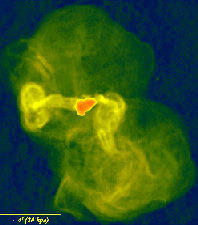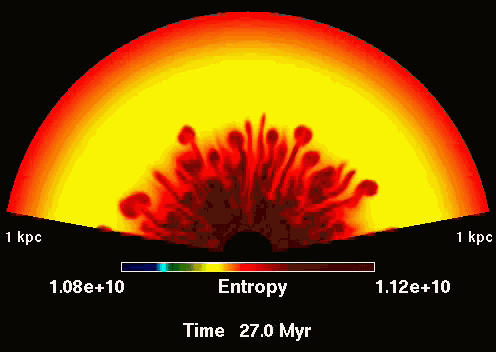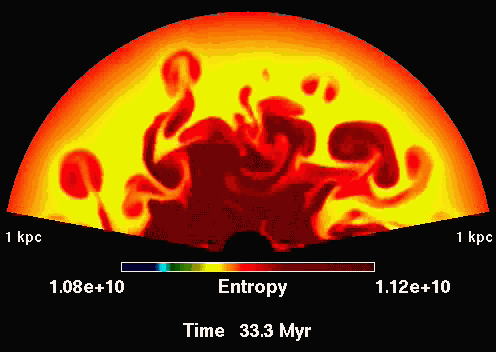The simulations of Alexei Kritsuk, Tomasz Plewa and Ewald Müller
exploit a numerical code for adaptively refining the computational
grid which was recently developed by Tomasz Plewa and Ewald
Müller at the Max-Planck-Institut für Astrophysik. The new
program can efficiently handle the vastly different length scales
encountered in simulations of galactic flows ranging from a few
hundred light years up to a million light years. The simulations
cover a period of time of up to 300 million years. The flow pattern
is characterized during the early evolution (see figure) by ascending
and descending mushroom-like structures.
An MPEG movie illustrating the onset of the outflow in case of
excessive central heating in the innermost 3000 light years of the
model galaxy up to 45 million years is shown here . (0.6 MByte)
An MPEG movie of the evolution of the outflow in case of excessive
central heating up to 100 million years covering a much larger region
of about 10 000 light years can be found here . (1.0 MByte)



